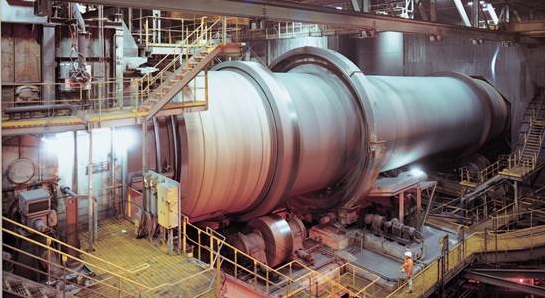
A calcining plant for petroleum coke, often referred to as calcined petroleum coke (CPC), is a vital facility in various industries that rely on this versatile carbonaceous material. The plant's primary function is to transform green petroleum coke into calcined petroleum coke, a process that significantly enhances its suitability for a broad range of applications. This article explores the pivotal role of a calcining plant in the production of CPC and the industries it serves.

Calcined petroleum coke is derived from the high-temperature treatment of green petroleum coke, a carbon-rich byproduct of the oil refining process. Green petroleum coke typically contains volatile compounds and impurities that need to be removed to make it suitable for industrial use. The calcining plant is where this transformation takes place.
The calcination process involves several key steps:
Before subjecting petroleum coke to high temperatures, it undergoes preheating to reduce thermal stress and improve energy efficiency. The temperature is slowly raised to prepare the coke for the subsequent calcination stages.
The preheated coke is then introduced into a calcination furnace, which is maintained at the desired high temperatures (typically between 1200°C and 1400°C) while keeping the environment oxygen-deprived. This prevents combustion and ensures that only volatile materials are removed.
After calcination, the coke is rapidly cooled to prevent re-absorption of volatile materials. Controlled cooling is essential to maintain the coke's desired properties and prevent the development of undesirable characteristics.
The final calcined coke is typically crushed, sized, and screened to meet specific customer requirements. This step ensures that the product's physical properties, such as particle size and density, are consistent and suitable for its intended use.
Importance of a Calcining Plant for Petroleum Coke
The calcination process is central to achieving a high carbon content in petroleum coke. By exposing the green coke to high temperatures, volatile compounds like hydrogen and sulfur are removed, leaving behind a carbon-rich material. The resulting calcined coke typically has a carbon content of 97% or higher, making it ideal for applications requiring high carbon purity.
One of the key advantages of calcined petroleum coke is its excellent electrical conductivity. This characteristic is particularly important in industries such as aluminum production, where CPC is used as a primary raw material for anodes. The high electrical conductivity of CPC ensures efficient and reliable performance in the smelting process.
The calcining process effectively reduces the levels of impurities in petroleum coke. This includes the removal of sulfur, which is a critical factor in industries focused on environmental compliance. Low sulfur content is essential for applications in the aluminum, steel, and chemical industries, as it minimizes emissions of sulfur compounds.
Calcined petroleum coke exhibits improved physical characteristics compared to green coke. It often has higher particle density, reduced porosity, and a more uniform particle size distribution. These enhanced physical properties make it suitable for various industrial applications, including as a carbon additive in steel production and as a fuel in cement kilns.
Applications of Calcined Petroleum Coke
The primary application of calcined petroleum coke is in the production of anodes for the aluminum smelting industry. Anodes are essential components in the electrolytic reduction of alumina to aluminum metal. CPC, with its high carbon content and electrical conductivity, is the preferred raw material for anodes.
Calcined petroleum coke is used as a carbon additive in the production of steel. It enhances the carbon content of the steel, improving its mechanical properties and reducing the need for coking coal. The steel industry relies on CPC to achieve cost-effective and eco-friendly steel production.
CPC serves as a valuable fuel source in cement kilns. Its high carbon content and energy value make it an efficient alternative to traditional fuels like coal. Using CPC as a fuel reduces energy costs and contributes to more sustainable cement production.
In the chemical industry, calcined petroleum coke is used as a reducing agent and temperature moderator in high-temperature chemical reactions. Its addition can help control and optimize chemical processes, ensuring they occur at the desired temperature and with maximum efficiency.
Calcined petroleum coke finds application in other industries as well. It is used as a fuel in various industrial furnaces, as a carbon additive in foundries, and as a precursor material for synthetic graphite production. Its versatility and high-quality properties make it a valuable resource across multiple sectors.
A calcining plant for petroleum coke is a crucial facility that enables the transformation of green petroleum coke into calcined petroleum coke. This process enhances the carbon content, electrical conductivity, and purity of the material, making it suitable for a wide range of applications. From the aluminum and steel industries to cement production and chemical processes, calcined petroleum coke plays a pivotal role in contributing to industrial efficiency, sustainability, and high-quality product outcomes. Its importance in various sectors underscores its significance in powering global industrial processes and progress.

Write a Message